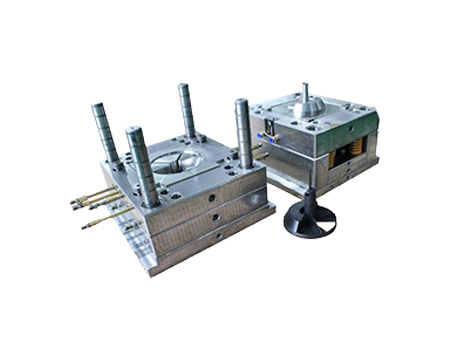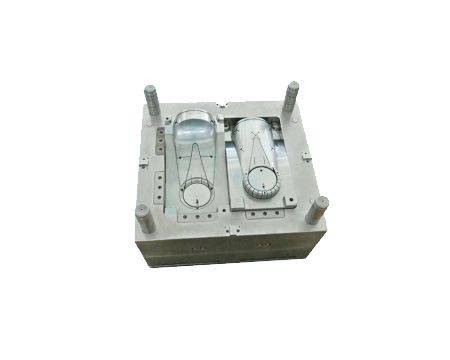1. Silicone mold is one of the simplest methods in rapid molds. Generally, the prototype is re-molded with silica gel. Generally, about 10-30 pieces can be copied! Silicone molds have good flexibility and replication performance, so you don’t need to consider pulling out. The inclination of the mold will not affect the dimensional accuracy, and it has good partitionability. It can be directly poured as a whole without dividing the upper and lower molds. Then cut along the predetermined parting line to take out the master mold!
2. Regarding the production of silicone molds, the selection of the mold opening form and the selection of the mold line are very important. First, it is convenient to take the mold. Second, the mold line should be selected so as not to affect the overall effect of the product. Third, it does not affect the quality of the product. For example, the mold line position of the waterscape series products is too high, and the mold sealing line requires a lot of materials, and the product cracks are prone to occur; the fourth is to reduce the process operation procedures, such as opening half of the mold.
3. In order to prevent silica gel from flowing around, fix the mold with wooden squares or boards in a regular range. When opening the die, use the wooden board and the sludge to separate the first part. There is no gap between the sludge and the mold, and the surface of the sludge is smooth. smooth. After the above work is prepared, then apply petroleum jelly or spray release agent on the plaster mold or the mold. For smooth products, use a clean cotton cloth dipped in petroleum jelly and apply it evenly on the mold. Keep for 30 minutes to make the mold. The product fully absorbs the petroleum jelly, and then wipes the surface of the mold with a clean cotton cloth, and the surface is required to be bright; and the textured product only needs to be evenly coated with the petroleum jelly to adjust the silica gel according to the formula. When mixing the silica gel, stir in irregular directions to make the curing agent and silica gel fully mix to minimize air mixing into the rubber. For smooth products, it is best to vacuum once when the first layer of rubber is applied, and keep the vacuum at -0.1Mpa. 7-8 seconds.
4. Molding should be made in time after the silica gel is matched. Pour the glue on the highest part of the mold in a trickle, let it flow naturally, brush it in place with an oil paintbrush where the flow is not in place, if it is a piece of silica gel, not only fill the entire product, but also brush the glue evenly. Each product should be brushed with at least three layers of silica gel. The thickness of each layer of silica gel is 1mm. In the process of brushing the silica gel, each layer is required to be cured before the other layer can be brushed. When brushing the third layer, add one layer on top of the second layer. Layer gauze to increase the strength of silicone. The thickness of the entire mold silicone part is controlled at 3-4mm according to the different requirements of the product size, and the width is not greater than the product width 60 mm. The start time of silica gel is 20 minutes.
5. Wash the master mold and dry it for smooth treatment (a layer of mold release wax or mold release agent can be applied)
6. Put 500-1000 grams of mold silicone rubber (mold silicone, mold rubber, silicone rubber, silicone) as a plastic basin for use;
7. Weigh the hardener according to the weight ratio (usually 1.5-2.5%), add it to the container for mixing, and stir well;
8. Add a certain amount of silica gel diluent as appropriate (especially the first layer). Until the mixture is uniform, usually 3-5 minutes.
9. Mold silicone rubber (mold silicone rubber, mold rubber, silicone rubber, silica gel) is mixed with the hardener, and reacts at room temperature and releases low-molecular alcohol. In order to release the alcohol molecule from the colloid, it needs to be bubbled under negative pressure. -3 minutes. It can also be used without equipment (mainly depends on the operating experience of the mold maker)
10. Multi-layer coating film molds should be cured at the same time as inside, middle and outside. When the amount of curing agent is relatively small, the reaction time is longer and the reaction is sufficient, and the colloid is good. Therefore, the amount of curing agent is best to be less inside and more outside. When brushing, wait for the first layer (inner layer) to dry before brushing the second layer. The operating time is 30-50 minutes, and the mold removal time is 10-15 hours. The curing time is 24 hours. Note that it is best to add a mold cloth after painting the first and second layers, which can greatly improve the service life of the mold (but not use glass fiber cloth, otherwise it is easy to cause delamination and the entire mold is scrapped)
11. Three-dimensional perfusion mold, generally curing in 10-15 hours is better.
12. After the soft mold is made, plaster or FRP jacket should be made to support the silicone soft mold;
13. Pay attention to the mold line selection: choose a position that does not affect the appearance of the product; choose a position that is easy to process after grouting; choose a position where the mold itself is easy to disassemble; choose a position where the product is not easy to deform;
14. Do not blindly increase the amount of hardener in order to catch up with the production schedule, otherwise the service life of the silicone mold will be greatly reduced.










